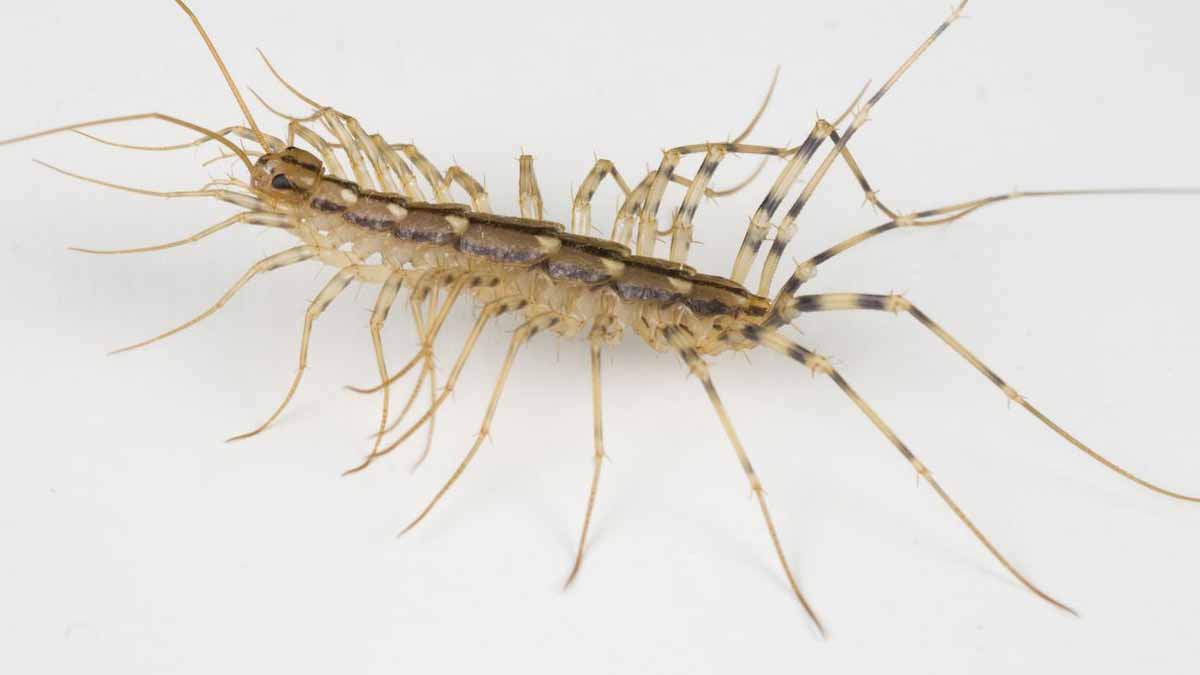One sudden dash across the floor can rattle even steady nerves. The quick legs, the stop and go sprint, then nothing. When centipedes show up, calm returns with clear steps. Experts point to simple fixes that change the rules inside your home. Reduce damp corners, tighten small gaps, and starve hiding spots. You keep control while nature stays outside. Follow a few steady habits, and the late night jolts fade, replaced by quiet rooms and easy breathing.
What These centipedes Are and Why They Appear
They’re arthropods, not insects, with flattened bodies and many legs in rhythmic motion. Colors vary—brown, reddish, or tan—and adults measure about one to three inches. Outdoors they hide under stones, compost, mulch, or leaf litter because they need moisture to survive. According to Rafia Khan, PhD, Texas A&M AgriLife, dryness drives them away.
Indoors, they favor basements and bathrooms, where damp air lingers. If you notice one or two, Chris Hayes, PhD, North Carolina State University, says your landscape is likely balanced. However, frequent sightings suggest leaks, wet wood, or wicking moisture that calls for repairs and better ventilation.
House species (Scutigera coleoptrata) show three dark stripes along the body and banded legs. They move fast, so a glimpse is common. These hunters can live several years, yet dry interiors desiccate them. That’s why reducing humidity works. It shifts conditions, and in turn, centipedes give up and leave.
How They Hunt and What They Eat
Their long antennae scan, while modified front legs—called forcipules—grip prey and inject venom. Because this mechanism is precise, they dispatch pests at speed. The result is quieter nights and fewer crawling problems, and the cycle continues while access and moisture hold steady inside and around your home.
Diet is varied and relentless. They feed on ants, cockroaches, spiders, springtails, worms, nematodes, slugs, and even small toads or snakes when available. As predators, they lower other pest numbers; as guests, they unsettle people. So balance matters, and smart fixes keep benefits outside while comfort returns inside.
Bites happen, though most feel like a wasp sting. People allergic to insect venoms may react more. If you’re bitten and symptoms intensify, contact a doctor. Hayes notes the risk is generally low, yet awareness helps. Keep calm, then address dampness and access, because without those supports centipedes seldom stay.
Moisture Problems and Indoor Clues to Act On
Water invites movement. Rotting wood around frames, sweating pipes, or damp grout provides shelter. Because small gaps accelerate entry, each crack magnifies the issue. Add a door sweep that actually seals, fit tight screens, then caulk or foam the smallest holes. You cut pathways, and pressure on your rooms eases.
Potted plants can harbor hidden hitchhikers. Elevate containers so air circulates, and check trays for standing water. Before winter, inspect every plant you plan to bring inside. Brush away debris, peel off old leaves, and examine the soil surface. That quick routine stops a shuttle service, so centipedes lose easy rides.
For occasional intruders, act simply. Vacuum them, or squash and discard. Glue boards help in basements and utility rooms; they don’t lure, but they intercept wanderers. If you’re catching more than expected, the board becomes a map. Track hotspots, then look for a leak nearby. Fix that, and numbers fall.
Spot the Differences with Millipedes and Key Traits
Confusion is common, yet shape tells the story. Centipede bodies are flatter and broader, with legs that angle outward. Millipedes look more domed, and their legs tuck beneath. Because antennae on centipedes are long and active, the head appears more alert, while millipedes seem rounded and compact.
Count per segment also helps. Centipedes carry one pair of legs per body segment; millipedes carry two. The motion differs as well. Centipede gait looks side-swept and rapid, while millipedes ripple forward more slowly. When you know the pattern, you respond correctly, so treatments suit the right creature.
Outdoors, a few sightings signal a healthy yard. Hayes stresses that a balanced landscape sustains predators and prey. Indoors, patterns matter more than single events. Repeated encounters point to humidity, seepage, or hidden rot. Track time and place, because targeted fixes restore comfort, and centipedes stop crossing your thresholds.
Stopping centipedes at the Threshold
Start at the foundation. Rake thick mulch away from walls so beds dry faster. Thin layers, remove leaf litter, and clear decaying vegetation in shaded strips. Because wet borders shelter prey and hunters, this simple cleanup breaks the chain. Pests disperse, and your siding and sills stay sound.
Seal, then monitor. Use quality caulk or expanding foam around window and door frames. Replace torn screens, and fit door sweeps that touch the floor. Place glue boards where activity peaks; they’ll catch passersby and reveal routes. If numbers spike indoors, investigate again. Moisture hides nearby, and repairs solve the root.
For persistent pressure, consider a labeled residual treatment outdoors along exterior foundation walls a few inches above the soil line. Read the label, follow it exactly, and confirm centipedes appear on the list. If entry points remain unclear or activity becomes routine, hire a licensed pest professional to audit and treat.
A final word on comfort and simple routines
Steady habits make the difference. Clean borders, fix leaks quickly, and seal paths as you spot them. Because each step reduces shelter, you gain control without harsh measures. Keep perspective, and let helpful predators stay outside. Indoors, you protect your space, while centipedes learn there’s nothing to find.
